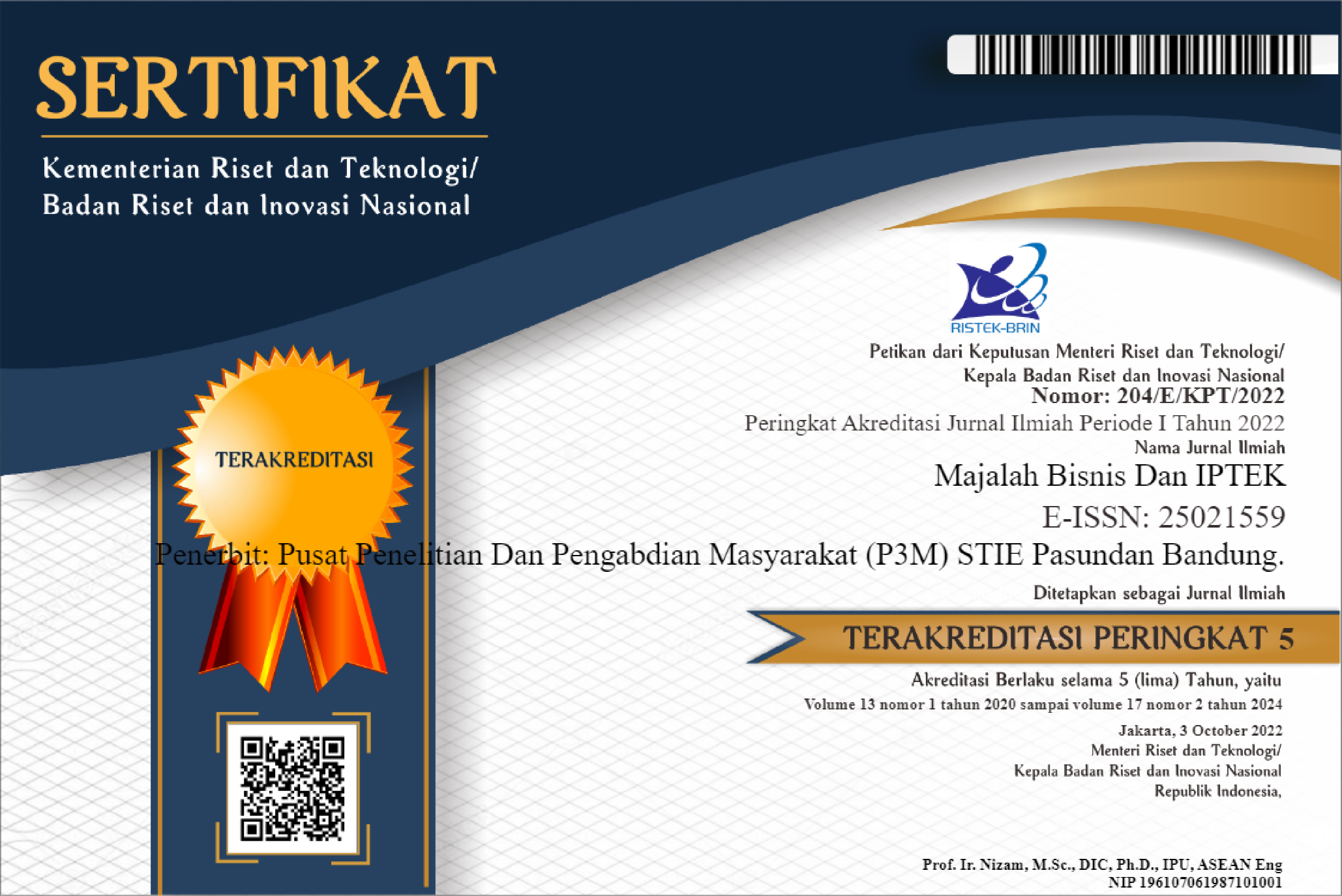JOURNAL TEMPLATE

Download Sertifikat Akreditasi
The structur of article as “IMRaD” format:
Download Template Article
• Title
• Abstract
• Keywords
• Introduction
• Literature Reviwe (if any)
• Methods
• Results and Discussion
• References
Then the format of the artcle is as follows:
Title “Times New Roman 14pt, Capitalize Each Word, Bold”
Name “Times New Roman 12pt, Bold “
Affiliation “Times New Roman 12pt, Bold “
Email “Times New Roman 12pt, Bold “
Abstract
Abstract solid contains a summary of the problem and research objectives, research subjects, research methods, and the findings. Maximum length 200 words.
[space 1.15pt]
Keywords: contains the basic concepts of the field under study, up to 5 keywords
Abstract “Times New Roman 12pt, Italic, 1,15 space “
Keywords: “Times New Roman 12pt, Italic, Bold, Lowercase “
INTRODUCTION
The introduction explains the main points discussed as the research / problem background, which contains the research issues, research objectives, and a summary of relevant theoretical studies. The preliminary presentation in the article does not include the title. Contains a variety of theories relevant to the research variables that contain the indicators used to measure, as well as the description of the relationships among the variables.
The introductory section of a research paper typically provides the contextual background and rationale for undertaking the study. The exposition is presented clearly and concisely, devoid of superfluous introductory details. Propositions concerning the subject of inquiry and anticipated results introduce through deductive reasoning.
The problem phenomenon explicates through field observations, the research object, or the gap theory phenomenon. The literature references should primarily comprise primary sources, with a preference for pertinent journal articles and patents that are both contemporary and authentic. Primary references do not include lecture notes or textbooks. The literature review is a comprehensive and organized analysis of the theoretical and conceptual frameworks, research findings, principles, postulates, assumptions, and pertinent research outcomes that support the research problem or ideas. Its purpose is to enhance comprehension of the research problem and its resolution. The composition of the problem statement and research objectives is typically placed toward the conclusion of the academic work and formulated utilizing quantifiable and perceptible action words.
Introduction “Times New Roman 12pt, 1,15 space “
RESEARCH METHODS
Methods include research design, population and sample, development of research instruments, data collection techniques, and data analysis techniques, described briefly.
Research Methods “Times New Roman 12pt, 1,15 space “
RESULT AND DISCUSSION
The results present the results of the final data analysis instead of unprocessed raw data.
Discussion is an explicit affirmation of the interpretation of the results of data analysis, linking findings to previous theories or research, and the implications of the findings are linked to current circumstances.
The description exposure can be accompanied by images, photos, tables, and graphs all of which include the title, and the reference source if necessary.
Result and Discussion “Times New Roman 12pt, 1,15 space “
CONCLUSION
In closing, write the statement paragraph style narrative—author Stating the research findings' conclusions limiting research and future research.
Conclusions “Times New Roman 12pt, 1,15 space “
REFERENCES
References “Times New Roman 12pt, 1,15 space, APA Style 7 “
REFERENCES
APA 6th style on https://apastyle.apa.org/6th-edition-resources/basics-tutorial with alphabetical order. Authors can use reference manager applications such as Mandeley Reference Manager, Zotero Reference Manager or Google Scholar Citations Tool. Details concerning this referencing style can also be found at https://apastyle.apa.org/blog/basics-7e-tutorial.
Reference sourced from publications published within the last five years and 80 % were referred from primary reference.
Example:
Books:
Sekaran, U., & Bougie, R. (2010). Research methods for business: A skill building approach (5ed.). United Kingdom: John Wiley & Sons.
Journal:
Alarcon, G. M. (2011). A meta-analysis of burnout with job demands, resources, and attitudes. Journal of vocational behavior, 79(2), 549-562.
Tannenbaum, S. I., & Cerasoli, C. P. (2013). Do team and individual debriefs enhance performance? A meta-analysis. Human factors, 55(1), 231-245.
Proceeding:
Chandler, G, N., (2008). Organizational learning and new venture performance. Proceedings, USASBE, 0240-0255.
LIST OF APPENDICES (IF ANY)
Acknowledgments addressed to them (individuals, organizations, and institutions) that have helped carry out research and writing. (if available)
Indexing by:
ISSN : 2502-1559
![]()
This work is licensed under a Creative Commons Attribution-NonCommercial-ShareAlike 4.0 International License.